Products You May Like
Ultralighters can be an uncompromising bunch when it comes to the gear they carry—a spartan philosophy often goes hand-in-hand with shaving ounces and grams. Whether sitting around an AT shelter or debating on Reddit, the ultralight community has coalesced around a few commonly held opinions, some of which can seem more like rigid requirements to new ultralighters. But there should also be room for nuance: Hiking happens across varying terrain and weather, undertaken by people of different physical abilities and tolerances. Here are the five common ultralight beliefs worth challenging.
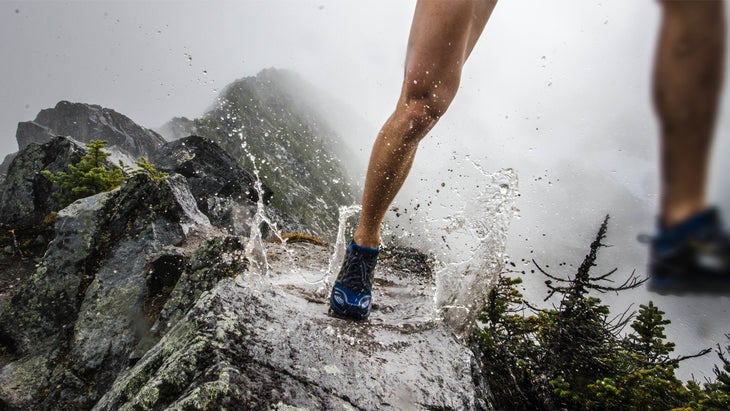
1. Gore-Tex doesn’t belong in footwear.
Trail running shoes are a perfect fit for the ultralight ethos. They’re lightweight, don’t have heavy soles or unnecessary ankle support like boots often do, and—critically—are breathable. That last part is why most ultralighters don’t want a Gore-Tex layer anywhere near their feet. And there’s something to that: An unlined running shoe sheds water quickly and starts drying out as you hike. While a waterproof liner can keep your feet dry, if it does wet out (or if water gets over the top of your shoes) your footwear will stay wet—and stay heavy—for a longer time.
IGNORE IT IF: You often hike in wet, muddy, or boggy conditions.
Simply put, the advantages of quick-drying trail runners won’t mean much if they never get the chance to dry out. Maybe you love to explore the Columbia River Gorge on rainy weekends. Maybe you’re planning a trip to the Scottish Highlands. Both are examples of conditions where your footwear is likely to get wet and stay wet. In scenarios like these, a waterproof liner will give you a fighting chance to keep your feet dry and stave off issues like blisters and rashes.
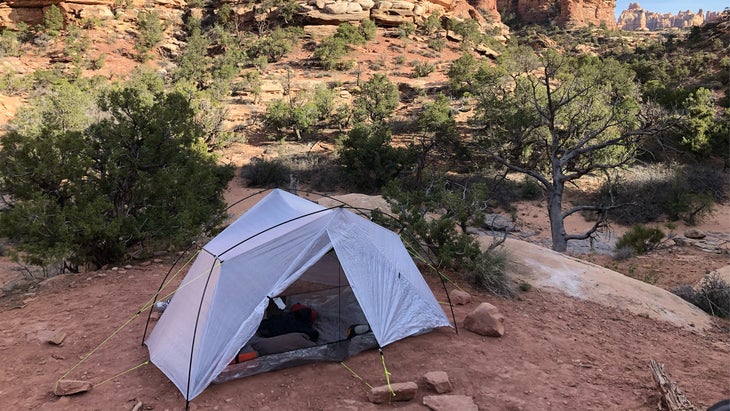
2. Freestanding tents are overkill.
Your shelter is often the heaviest item you’ll carry on a backpacking trip, so it’s no wonder that ultralighters have embraced tarp-style tents supported by trekking poles. They’re lighter in almost all cases, especially when you factor in the weight saved by nixing tent poles altogether. While there are some traditional freestanding tents that are very lightweight, they tend to have a small interior and steep price tag.
IGNORE IT IF: You often camp in rocky terrain or alpine environments.
Trekking pole shelters might be light, but they have one big drawback: They require anywhere from four to eight guylines and stakes to pitch correctly. In hard or rocky ground, setting half a dozen stakes securely can be mammoth undertaking. If these conditions sound familiar to you, opting for a freestanding tent could save you a lot of headache caused by broken tent stakes or attempting to tie guylines around rocks.
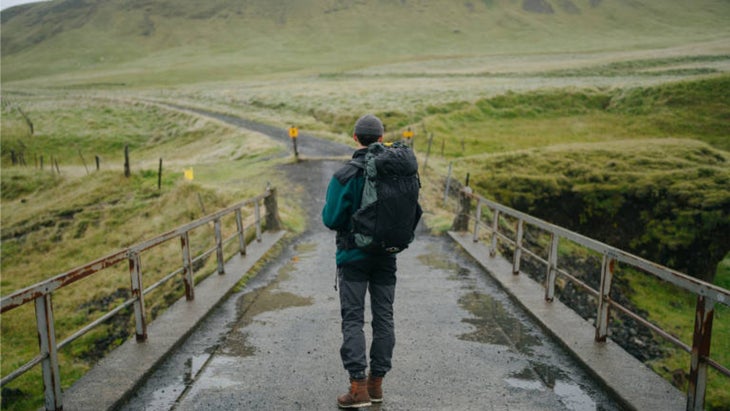
3. Get the lightest pack that can support all of your gear.
It’s commonly accepted that if you’re updating your backpacking kit, you should buy your new pack at the end of the process to make sure that you can fit all of your new gear inside. For ultralighters, the weight of the rest of your gear also determines how small and light your new pack can be. The most extreme ultralighters can fit their 6-pound base weight in a 40-liter frameless pack. But no matter the base weight, all ounce-counters are after the lightest pack they find comfortable in order to maximize weight savings.
IGNORE IT IF: You don’t pack ultralight for every trip.
If your barebones ultralight kit maxes out your backpack’s carrying capacity, that leaves you with little flexibility when situations arise that require some spare room. On a thru-hike or long distance trip, this might be an unexpectedly long stretch without resupply or fewer reliable water sources than you were anticipating. It could also be as simple as weekend trips with friends or family, where you want to carry better food and more creature comforts. One solution is to buy multiple packs to suit these different scenarios, but finding one do-it-all backpack that hits the right mix of ultralight sensibilities and extra carrying capacity can work, too. At the cost of a few ounces, a lightweight suspension system and extra 5-10 liters of space can go a long way towards increasing your pack’s utility.
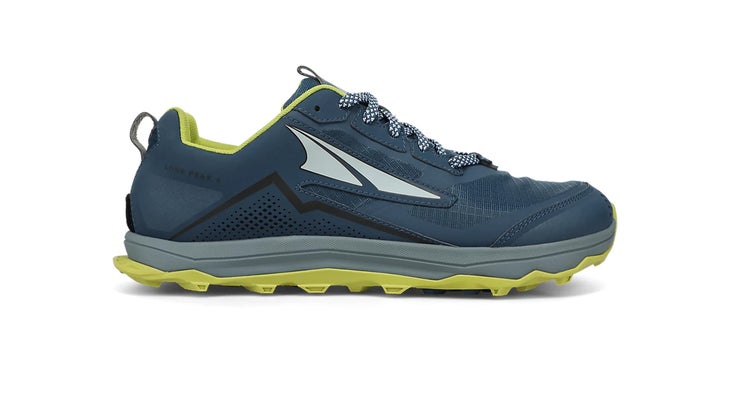
4. Zero-drop shoes or bust.
The most popular trail running shoes among ultralight hikers have a few things in common: They tend to have a wide toebox and a flat footbed with no height difference from heel to toe (also called “zero drop”.) The wide forefoot, typified by brands like Altra and Topo Athletic, is especially popular among long-distance hikers, who often find narrower styles become too tight when their feet swell after many days of high mileage. Zero-drop shoes first caught on with trail runners alongside the barefoot running philosophy described in Christopher McDougall’s bestselling book, Born to Run, and popularized by shoes like the Vibram FiveFingers. Proponents say these zero drop shoes promote a more natural walking motion.
IGNORE IT IF: You don’t want to change your hiking gait.
Barefoot running encourages a gait that mimics the way you would run without shoes: forefoot-first. So zero-drop shoes are a logical choice for anyone who doesn’t strike their heels while running, since a heel drop primarily functions to aid you in rolling heel to toe while in motion. In theory, this holds true for walking and hiking as well, but in practice, many people find that limiting heel strikes while walking is difficult, especially over uneven terrain, down steep slopes, or while fatigued at the end of a long day. This doesn’t mean that you won’t find zero-drop shoes comfortable if you land on your heels, but with the wide variety of trail running shoe designs on the market today, it’s worth finding the right amount of heel drop for your specific gait.
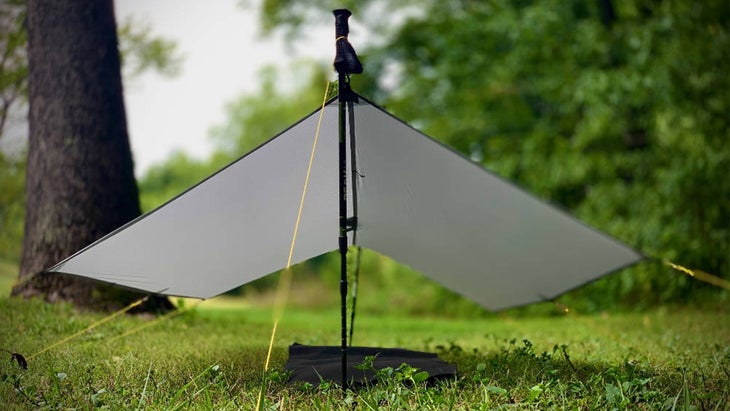
5. Multi-use gear is sacred.
In an ultralighter’s packing list, multi-use gear is critical. Whether it’s a tent peg used to dig cat holes, a sleeping mat that gives a frameless pack some extra support, or an empty pack placed under your legs at night to supplement a torso-length sleeping pad, multi-use gear is a time-honored way to reduce your pack weight. For many ultralighters, finding new or offbeat ways to use the gear they’re carrying is part of the fun.
IGNORE IT IF: You’re giving up overall utility.
At a certain point, you’ll start experiencing diminishing returns during your multi-use experiments. It could come when you test out a poncho that doubles as an emergency tarp and find that it doesn’t protect from rain or provide shelter particularly well compared to single-use alternatives. Your own limit for multi-use gear will be entirely subjective, but once you find yourself sacrificing sleep, safety, or peace of mind, it’s a sure sign you’ve hit that point.
